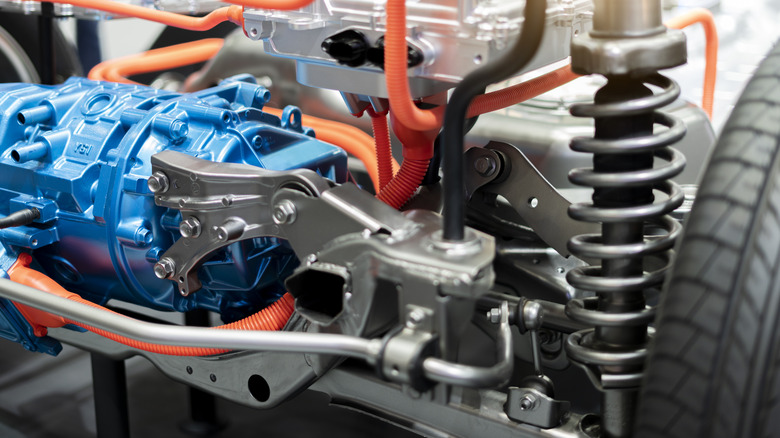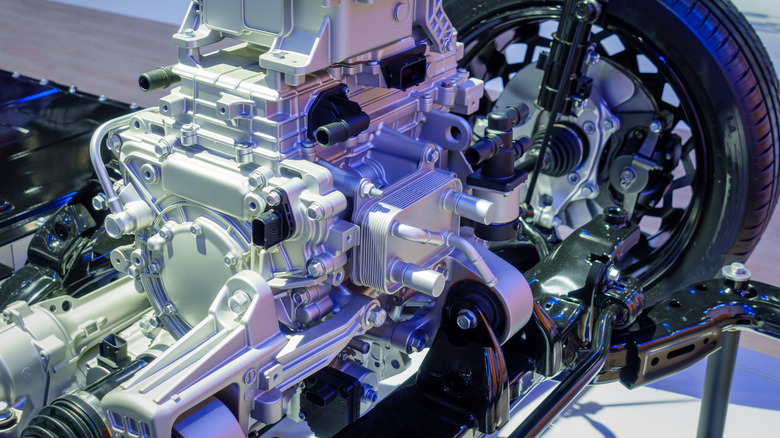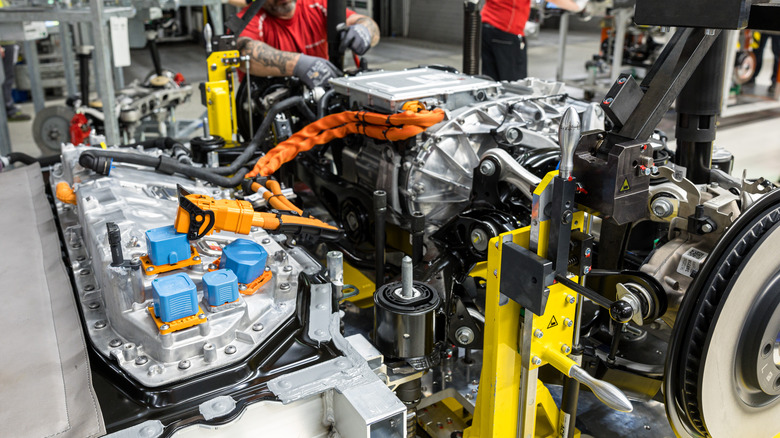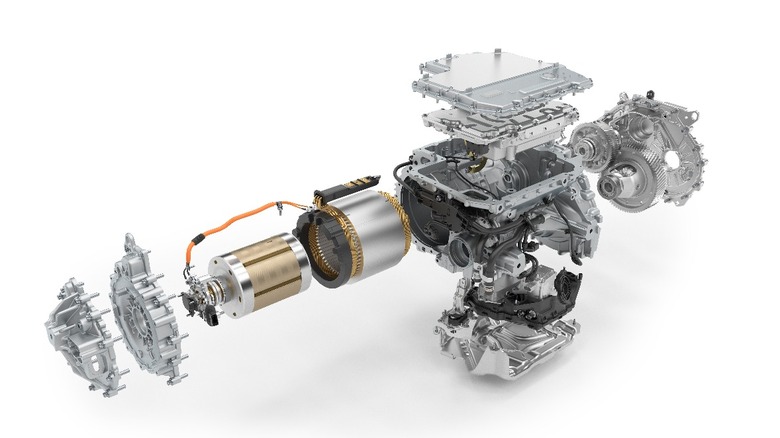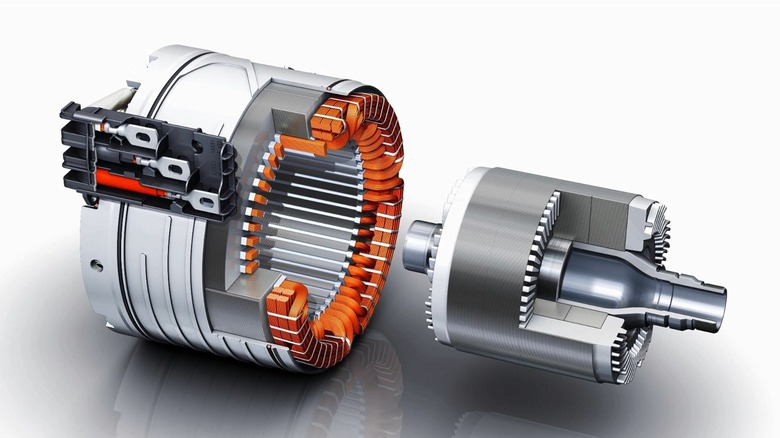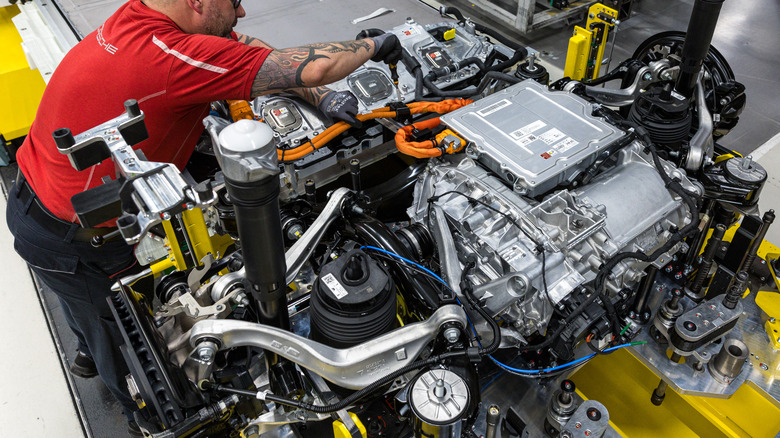Do Electric Cars Have Engines? How Their Motors & Drivetrain Work
With the internal combustion engine (ICE) being a staple of multiple forms of transportation since the late 19th century, most people are at least somewhat familiar with how an engine works: fuel and air go in, energy comes out. Obviously, the actual process of that synthesis is more complex than an eight-word description, but the overall concept is relatively simple.
Internal combustion engines have served the automotive world well, allowing humans to traverse massive distances with relative ease and minimal fuss. However, the automotive internal combustion engine is a dying breed, and ushering in its extinction is another form of automotive propulsion that predates fossil-burning.
Electric vehicles have been around since the 1830s, gaining lots of popularity in the early 1900s before losing out to ICE vehicles as electric cars were expensive to produce and the invention of electric starters made operating gas-powered vehicles easier. However, modern technology has improved the design of electric drivetrains, from better battery technology to more efficient electric motors, which has brought EVs back into the fold in a big way.
Unlike ICE vehicles, EVs don't have engines. Instead, they use large rechargeable battery packs that transfer current to electric motors which convert energy into rotational motion. Electric motors are the closest thing that electric vehicles have to engines, and they come in multiple forms; however, they all rely on a rotating magnetic field (RMF) to spin an internal rotor that sends torque through a transmission and differential before reaching the wheels.
How do electric vehicle motors work?
Electric motors are arguably the most critical part of an electric drivetrain, as they are responsible for converting current from a battery pack into rotational motion. To do that, they take advantage of the properties of magnetism. Picture a rotating shaft that has magnets attached to one end. Then imagine placing another set of magnets close to the magnets mounted on the shaft, with the north poles of each set facing each other.
The magnets on the shaft would rotate in a circular motion as the north poles of the two sets repel each other, and the south pole of the magnets on the other side of the shaft gets drawn to the north pole of the stationary magnets. At that point, the rotation would stop as the opposing poles lock into magnetic attraction.
By using electromagnets, which use an electric current to create an electromagnetic field, it is possible to alternate the polarity of one set of magnets, allowing the rotation to repeat over and over. While more varied in practice, that is the basic principle used by all electric vehicle motors.
Types of EV motors
So based on the previous explanation, electric vehicle motors consist of two main components — a rotor and a stator. The rotor is the rotating element of an electric motor that has magnets or electromagnets mounted to it. Surrounding the rotor is the stator, which is a stationary housing that encompasses the rotor and features mounted magnets or electromagnets of its own. By altering the polarity of the electromagnets on either the rotor or stator using current from the battery pack, magnetic properties keep the rotor spinning, creating rotational motion.
While all EV motors operate on the same overall principle, using a rotating magnetic field to spin a rotor, manufacturers have used different designs to achieve the same goal. EV motors fall into two camps — synchronous and asynchronous. In synchronous EV motors, the rotor turns at the same speed as the rotational magnetic field produced by the stator. Within the synchronous designs, there are permanent-magnet and current-excited motors. Asynchronous motors feature rotors that lag behind the rotating magnetic field produced by the stator. Induction motors fall into the asynchronous category.
Synchronous EV motors
Permanent-magnet motors, which fall under the synchronous umbrella, unsurprisingly use rotors with permanent magnets mounted to them. Since the rotor uses permanent magnets, it has inherent magnetic fields that interact with the rotating magnetic field created by the stator and allow the rotor to spin in step with the stator's RMF. There are multiple kinds of permanent-magnet motors, including ones that run by using an external motor controller to modulate DC current (brushless DC motors) and ones that use AC current (permanent-magnet synchronous motors).
Brushed current-excited AC synchronous motors are a newer form of EV motor that work in almost the same way as a permanent-magnet motor, but use brushes and a commutator to energize copper windings on the rotor instead. Just like a permanent-magnet motor, the energized windings create an electromagnetic field that interacts with the stator's rotating magnetic field, spinning the rotor.
Synchronous motors have the advantage of providing a lot of torque at low speeds while also having high power density. However, they suffer from "back electromotive force" at high speeds, where the rotor's magnets create drag, produce heat, and limit top-end power. They also require strong permanent magnets, which are made from rare earth elements that are becoming increasingly hard to source.
Asynchronous EV motors
AC induction motors, which are asynchronous, swap out permanent magnets on the rotor for sections of conductive metal, usually copper or aluminum. As the stator receives AC current and creates a rotating magnetic force, the magnetic lines of the RMF induce a current in the conductive elements in the rotor. That creates a rotating electromagnetic field within the stator's own rotating magnetic field, spinning the rotor. Since the rotor's electromagnetic field is only created after the stator's RMF passes over the rotor's conductive material, the rotor is constantly trying to keep up, making it asynchronous.
The speed of AC induction motors is controlled by varying the frequency of the AC current supplied to the stator and can also be depowered when they aren't actively needed for acceleration. That prevents the back electromotive force issue faced by permanent-magnet motors, increasing efficiency.
A primary downside of AC induction motors is their lack of low-speed torque compared to permanent-magnet motors. However, since they use electromagnets and relatively common conductive metals, they don't rely on rare earth materials to function. Due to their inexpensive construction and respectable efficiency, AC induction motors are common in quite a few electric vehicles including Tesla drivetrains that feature all-wheel drive.
How does the rest of an electric drivetrain work?
Compared to the amalgamation of complex and intricate systems that make up an internal combustion engine, electric drivetrains require fewer parts to operate. On average, an internal combustion engine needs around 200 parts to effectively convert air and fuel to rotational energy. In contrast, electric drivetrains only contain around 17 components. While EV powertrains seem less complex than gas engines, there is a lot that goes into transforming power from a charging station into vehicle motion.
Electric vehicles feature traction battery packs that are responsible for storing the energy gathered at a charging station or power supply. Level 3 fast chargers output high-voltage DC, while Level 1 and Level 2 chargers output AC current using wall outlets. Like all batteries, traction battery packs can only hold and disseminate DC, which is why an onboard charger and other power electronics are needed to convert the incoming AC current to DC for the battery to store. Once the battery is juiced up, the current is again converted to AC by an inverter and sent on to the electric motor.
The electric motor then converts power from the traction battery into rotational motion. After the electric motor generates torque, it is sent through a transmission designed for an electric drivetrain and onto a differential that splits it between the wheels.
It is important to note that electric motors also act as generators when power isn't being supplied to them via the battery during deceleration. When your foot isn't on the accelerator, the rotation from the wheels spins the rotor, generating a reverse rotating magnetic field that provides power through an AC-DC converter that charges the battery.
